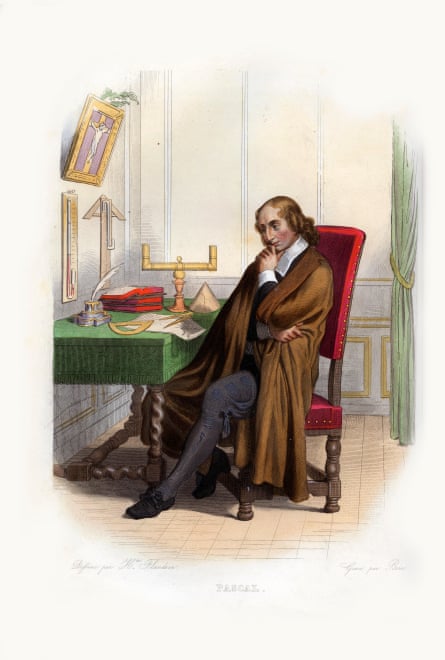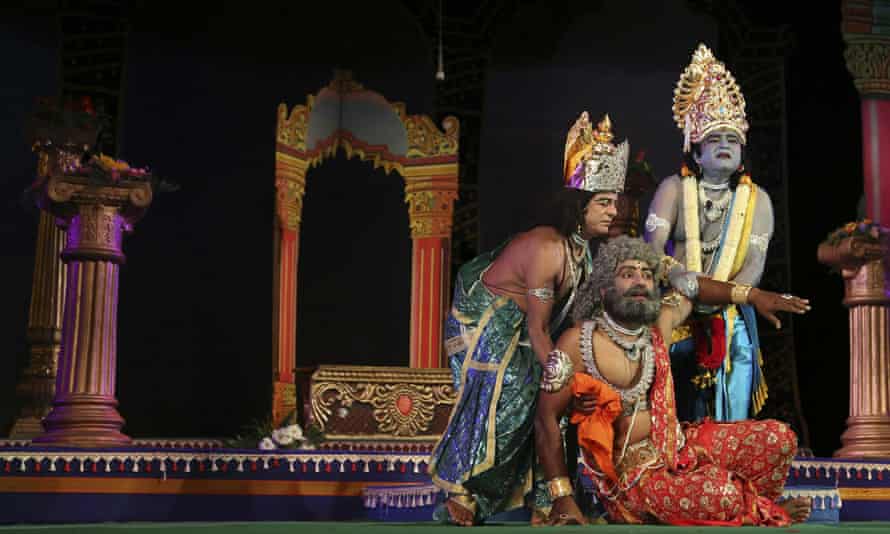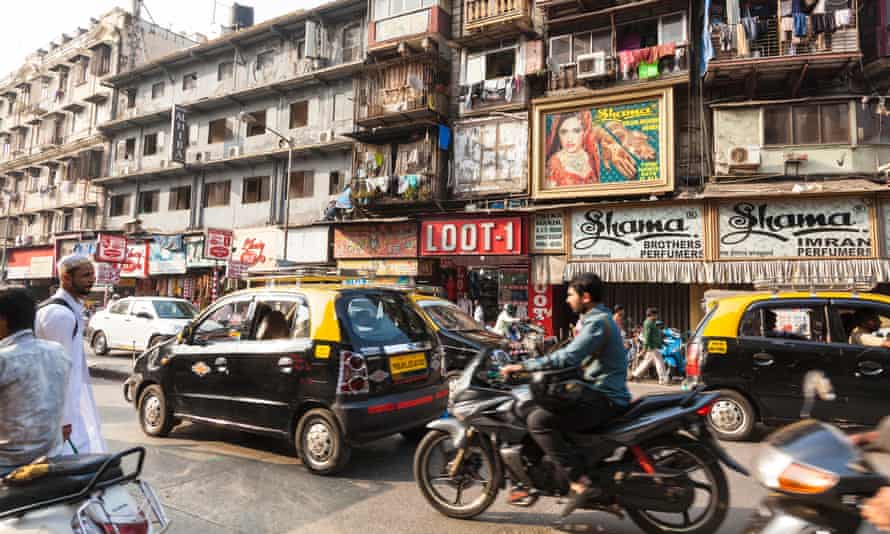In his Pensées, published posthumously in 1670, the French philosopher Blaise Pascal appeared to establish a foolproof argument for religious commitment, which he saw as a kind of bet. If the existence of God was even minutely possible, he claimed, then the potential gain was so huge – an “eternity of life and happiness” – that taking the leap of faith was the mathematically rational choice.
Pascal’s wager implicitly assumes that religion has no benefits in the real world, but some sacrifices. But what if there were evidence that faith could also contribute to better wellbeing? Scientific studies suggest this is the case. Joining a church, synagogue or temple even appears to extend your lifespan.
These findings might appear to be proof of divine intervention, but few of the scientists examining these effects are making claims for miracles. Instead, they are interested in understanding the ways that it improves people’s capacity to deal with life’s stresses. “Religious and spiritual traditions give you access to different methods of coping that have distinctive benefits,” says Doug Oman, a professor in public health at the University of California Berkeley. “From the psychological perspective, religions offer a package of different ingredients,” agrees Prof Patty Van Cappellen at Duke University in Durham, North Carolina.
Studying the life-extending benefits of religious practice can therefore offer useful strategies for anyone – of any faith or none – to live a healthier and happier life. You may find yourself shaking your head in scepticism, but the evidence base linking faith to better health has been decades in the making and now encompasses thousands of studies. Much of this research took the form of longitudinal research, which involves tracking the health of a population over years and even decades. They each found that measures of someone’s religious commitment, such as how often they attended church, were consistently associated with a range of outcomes, including a lower risk of depression, anxiety and suicide and reduced cardiovascular disease and death from cancer.

People who pray tend to have a more positive outlook on life – and those who pray for the wellbeing of others tend to live longer. Photograph: Kumar Sriskandan/Alamy
Unlike some other areas of scientific research suffering from the infamous “replication crisis”, these studies have examined populations across the globe, with remarkably consistent results. And the effect sizes are large. Dr Laura Wallace at the University of Chicago Booth School of Business, for instance, recently examined obituaries of more than 1,000 people across the US and looked at whether the article recorded the person’s religious affiliation – a sign that their faith had been a major element of their identity.
Publishing her results in 2018, she reported that those people marked out for their faith lived for 5.6 years more, on average, than those whose religion had not been recorded; in a second sample, looking specifically at a set of obituaries from Des Moines in Iowa, the difference was even greater – about 10 years in total. “It’s on par with the avoidance of major health risks – like smoking,” says Wallace. To give another comparison: reducing hypertension adds about five years to someone’s life expectancy.
Health effects of this size demand explanation and scientists such as Wallace have been on the case. One obvious explanation for these findings is that people of faith live cleaner lives than the non-religious: studies show that churchgoers are indeed less likely to smoke, drink, take drugs or practise unsafe sex than people who do not attend a service regularly (though there are, of course, notable exceptions).
This healthier living may be the result of the religious teaching itself, which tends to encourage the principles of moderation and abstinence. But it could also be the fact that religious congregations are a self-selecting group. If you have sufficient willpower to get out of bed on a Sunday morning, for example, you may also have enough self-control to resist life’s other temptations.
Importantly, however, the health benefits of religion remain even when the scientists have controlled for these differences in behaviour, meaning that other factors must also contribute. Social connection comes top of the list. Feelings of isolation and loneliness are a serious source of stress in themselves and exacerbate the other challenges we face in life. Even something as simple as getting to work becomes far more difficult if you cannot call on a friend to give you a lift when your car breaks down.
Chronic stress response can result in physiological changes such as heightened inflammation, which, over the years, can damage tissue and increase your risk of illness. As a result, the size of someone’s social network and their subjective sense of connection with others can both predict their health and longevity, with one influential study by Prof Julianna Holt-Lunstad at Brigham Young University suggesting that the influence of loneliness is comparable to that of obesity or low physical exercise.
Unlike some other areas of scientific research suffering from the infamous “replication crisis”, these studies have examined populations across the globe, with remarkably consistent results. And the effect sizes are large. Dr Laura Wallace at the University of Chicago Booth School of Business, for instance, recently examined obituaries of more than 1,000 people across the US and looked at whether the article recorded the person’s religious affiliation – a sign that their faith had been a major element of their identity.
Publishing her results in 2018, she reported that those people marked out for their faith lived for 5.6 years more, on average, than those whose religion had not been recorded; in a second sample, looking specifically at a set of obituaries from Des Moines in Iowa, the difference was even greater – about 10 years in total. “It’s on par with the avoidance of major health risks – like smoking,” says Wallace. To give another comparison: reducing hypertension adds about five years to someone’s life expectancy.
Health effects of this size demand explanation and scientists such as Wallace have been on the case. One obvious explanation for these findings is that people of faith live cleaner lives than the non-religious: studies show that churchgoers are indeed less likely to smoke, drink, take drugs or practise unsafe sex than people who do not attend a service regularly (though there are, of course, notable exceptions).
This healthier living may be the result of the religious teaching itself, which tends to encourage the principles of moderation and abstinence. But it could also be the fact that religious congregations are a self-selecting group. If you have sufficient willpower to get out of bed on a Sunday morning, for example, you may also have enough self-control to resist life’s other temptations.
Importantly, however, the health benefits of religion remain even when the scientists have controlled for these differences in behaviour, meaning that other factors must also contribute. Social connection comes top of the list. Feelings of isolation and loneliness are a serious source of stress in themselves and exacerbate the other challenges we face in life. Even something as simple as getting to work becomes far more difficult if you cannot call on a friend to give you a lift when your car breaks down.
Chronic stress response can result in physiological changes such as heightened inflammation, which, over the years, can damage tissue and increase your risk of illness. As a result, the size of someone’s social network and their subjective sense of connection with others can both predict their health and longevity, with one influential study by Prof Julianna Holt-Lunstad at Brigham Young University suggesting that the influence of loneliness is comparable to that of obesity or low physical exercise.

The 17th-century mathematician Blaise Pascal, author of the Pensées – and the famous wager. Photograph: Alamy
Religions, of course, tend to be built around a community of like-minded worshippers who meet regularly and have a shared set of beliefs. And many of the specific rituals will also contribute to a sense of communion with others. Christians, for example, are encouraged to pray on behalf of other people and this seems to bring its own health benefits, according to a brand new study by Prof Gail Ironson at the University of Miami.
Ironson has spent decades studying the ways that people with HIV cope with their infection and the influences of these psychological factors on the outcomes of disease. Examining data covering 17 years of 102 HIV patients’ lives, she found that people who regularly prayed for others were twice as likely to survive to the end of the study, compared with those who more regularly prayed for themselves. Importantly, the link remained even after Ironson had accounted for factors such as adherence to medications or substance abuse or the patient’s initial viral load.
Besides encouraging social connection, religion can help people to cultivate positive emotions that are good for our mental and physical wellbeing, such as gratitude and awe. Various studies show that regularly counting your blessings can help you to shift your focus away from the problems you are facing, preventing you from descending into the negative spirals of thinking that amplify stress. In the Christian church, you may be encouraged to thank God in your prayers, which encourages the cultivation of this protective emotion. “It’s a form of cognitive reappraisal,” says Van Cappellen. “It’s helping you to re-evaluate your situation in a more positive light.”
Awe, meanwhile, is the wonder we feel when we contemplate something much bigger and more important than ourselves. This can help people to cut through self-critical, ruminative thinking and to look beyond their daily concerns, so that they no longer make such a dent on your wellbeing.
Last, but not least, religious faiths can create a sense of purpose in someone’s life – the feeling that there is a reason and meaning to their existence. People with a sense of purpose tend to have better mental wellbeing, compared with those who feel that their lives lack direction, and – once again – this seems to have knock-on effects for physical health, including reduced mortality. “When people have a core set of values, it helps establish goals. And when those goals are established and pursued, that produces better psychological wellbeing,” says Prof Eric Kim at the University of British Columbia, who has researched the health benefits of purpose in life. Much like awe and gratitude, those positive feelings can then act as a buffer to stress.
Religions, of course, tend to be built around a community of like-minded worshippers who meet regularly and have a shared set of beliefs. And many of the specific rituals will also contribute to a sense of communion with others. Christians, for example, are encouraged to pray on behalf of other people and this seems to bring its own health benefits, according to a brand new study by Prof Gail Ironson at the University of Miami.
Ironson has spent decades studying the ways that people with HIV cope with their infection and the influences of these psychological factors on the outcomes of disease. Examining data covering 17 years of 102 HIV patients’ lives, she found that people who regularly prayed for others were twice as likely to survive to the end of the study, compared with those who more regularly prayed for themselves. Importantly, the link remained even after Ironson had accounted for factors such as adherence to medications or substance abuse or the patient’s initial viral load.
Besides encouraging social connection, religion can help people to cultivate positive emotions that are good for our mental and physical wellbeing, such as gratitude and awe. Various studies show that regularly counting your blessings can help you to shift your focus away from the problems you are facing, preventing you from descending into the negative spirals of thinking that amplify stress. In the Christian church, you may be encouraged to thank God in your prayers, which encourages the cultivation of this protective emotion. “It’s a form of cognitive reappraisal,” says Van Cappellen. “It’s helping you to re-evaluate your situation in a more positive light.”
Awe, meanwhile, is the wonder we feel when we contemplate something much bigger and more important than ourselves. This can help people to cut through self-critical, ruminative thinking and to look beyond their daily concerns, so that they no longer make such a dent on your wellbeing.
Last, but not least, religious faiths can create a sense of purpose in someone’s life – the feeling that there is a reason and meaning to their existence. People with a sense of purpose tend to have better mental wellbeing, compared with those who feel that their lives lack direction, and – once again – this seems to have knock-on effects for physical health, including reduced mortality. “When people have a core set of values, it helps establish goals. And when those goals are established and pursued, that produces better psychological wellbeing,” says Prof Eric Kim at the University of British Columbia, who has researched the health benefits of purpose in life. Much like awe and gratitude, those positive feelings can then act as a buffer to stress.

Volunteers sort produce at a food bank warehouse in Kingston upon Thames, Surrey, in February this year. People who spend time helping others seem to live longer. Photograph: Vickie Flores/EPA
These are average effects, which don’t always take into account that huge variety of people’s experiences. While some Christians might see God as a benevolent figure, others might have been taught that he is judgmental and punishing and those views can make a big difference in the effects on our health. In her studies of HIV patients, Ironson found that people who believed in a vengeful God showed a faster disease progression – as measured by their declining white blood cell count – compared with those who believed that he was a merciful figure.
Ultimately, most people’s faith will arise from real convictions; it seems unlikely that many people would adopt a particular religious view solely for the health benefits. But even if you are agnostic, like me, or atheist, this research might inform your lifestyle.
You can start by considering contemplative techniques, which come in many more forms than the mindful breathing and body-scan techniques that have proved so popular. Scientists have become increasingly interested in “loving-kindness meditation”, for example, in which you spend a few moments thinking warm thoughts about friends, strangers, even enemies. The practice was inspired by the Buddhist principle of mettā, but it also resembles the Christian practice of intercessory prayer. When practised regularly, this increases people’s feelings of social connection and empathy with the consequent benefits for their mental health. Importantly, it also changes people’s real-life actions towards others, for instance encouraging more pro-social behaviour.
The power of religion is that it gives you this package of ingredients that are pre-made and organised for youProf Patty Van Cappellen
To build more gratitude into your life, meanwhile, you might keep a diary listing the things that you have appreciated each day and you can make a deliberate habit of thanking the people who have helped you; both strategies have been shown to improve people’s stress responses and to improve overall wellbeing. And to cultivate awe, you might go on a regular nature walk, visit a magnificent building within your city or watch a film that fills you with wonder.
If you have time and resources for greater commitments, you could also take up a voluntary activity for a cause that means a lot to you, a task that may help to boost your sense of purpose and which could also enhance your social life. Dr Wallace’s work has shown that the sheer amount of volunteering someone performs could, independently, explain part of the longevity boost of religious people, but charitable actions do not need to be linked to a particular faith for you to gain those benefits. “If people are able to plug into causes that really light up their intrinsic values, and then find a community that helps them reach their goals, that’s another way in which the framework of religion can be taken into a non-religious context,” says Prof Kim.
The challenge is to ensure that you build all these behaviours into your routine, so that you perform them with the same regularity and devotion normally reserved for spiritual practices. “The power of religion is that it gives you this package of ingredients that are pre-made and organised for you,” says Van Cappellen. “And if you are not religious you have to create it on your own.” You don’t need to make a leap of faith to see those benefits.
These are average effects, which don’t always take into account that huge variety of people’s experiences. While some Christians might see God as a benevolent figure, others might have been taught that he is judgmental and punishing and those views can make a big difference in the effects on our health. In her studies of HIV patients, Ironson found that people who believed in a vengeful God showed a faster disease progression – as measured by their declining white blood cell count – compared with those who believed that he was a merciful figure.
Ultimately, most people’s faith will arise from real convictions; it seems unlikely that many people would adopt a particular religious view solely for the health benefits. But even if you are agnostic, like me, or atheist, this research might inform your lifestyle.
You can start by considering contemplative techniques, which come in many more forms than the mindful breathing and body-scan techniques that have proved so popular. Scientists have become increasingly interested in “loving-kindness meditation”, for example, in which you spend a few moments thinking warm thoughts about friends, strangers, even enemies. The practice was inspired by the Buddhist principle of mettā, but it also resembles the Christian practice of intercessory prayer. When practised regularly, this increases people’s feelings of social connection and empathy with the consequent benefits for their mental health. Importantly, it also changes people’s real-life actions towards others, for instance encouraging more pro-social behaviour.
The power of religion is that it gives you this package of ingredients that are pre-made and organised for youProf Patty Van Cappellen
To build more gratitude into your life, meanwhile, you might keep a diary listing the things that you have appreciated each day and you can make a deliberate habit of thanking the people who have helped you; both strategies have been shown to improve people’s stress responses and to improve overall wellbeing. And to cultivate awe, you might go on a regular nature walk, visit a magnificent building within your city or watch a film that fills you with wonder.
If you have time and resources for greater commitments, you could also take up a voluntary activity for a cause that means a lot to you, a task that may help to boost your sense of purpose and which could also enhance your social life. Dr Wallace’s work has shown that the sheer amount of volunteering someone performs could, independently, explain part of the longevity boost of religious people, but charitable actions do not need to be linked to a particular faith for you to gain those benefits. “If people are able to plug into causes that really light up their intrinsic values, and then find a community that helps them reach their goals, that’s another way in which the framework of religion can be taken into a non-religious context,” says Prof Kim.
The challenge is to ensure that you build all these behaviours into your routine, so that you perform them with the same regularity and devotion normally reserved for spiritual practices. “The power of religion is that it gives you this package of ingredients that are pre-made and organised for you,” says Van Cappellen. “And if you are not religious you have to create it on your own.” You don’t need to make a leap of faith to see those benefits.


 Bombay ... a hubub, a maelstrom. Photograph: Galit Seligmann/Alamy
Bombay ... a hubub, a maelstrom. Photograph: Galit Seligmann/Alamy



